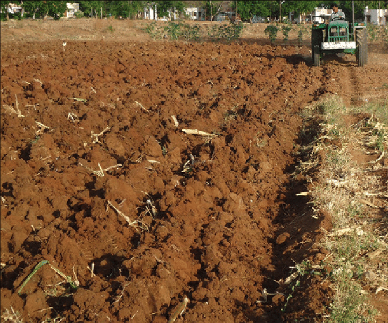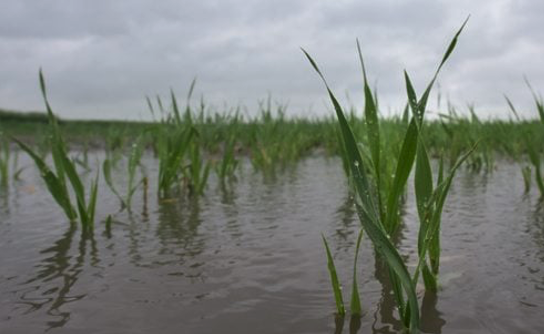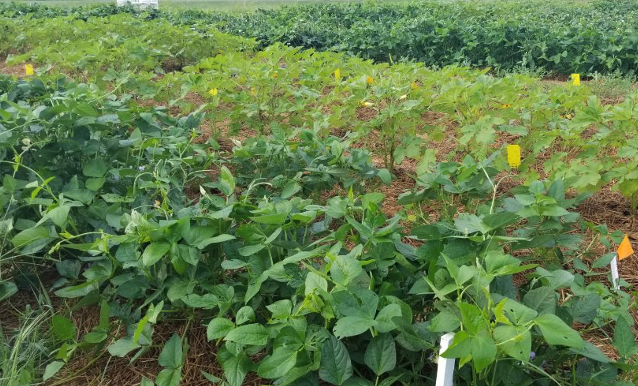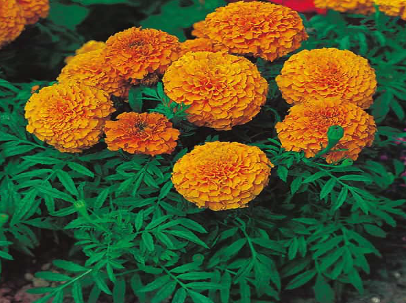🧤 Management
Learn about different nematode control methods
Which of the following is correct regarding nematode control?
- The nematode control aims to improve growth, quality and yield by keeping the nematode population below the economical threshold level.
- The control measures to be adopted should be profitable and cost effective.
- The nematode control methods are
- Cultural Control
- Regulatory (Legal) Control
- Physical Control
- Biological Control
- Chemical Control
- Integrated Nematode Management (INM)
Cultural Control
- Cultural nematode control methods are agronomical practices employed in order to minimize nematode problem in the crops.
Crop Rotation
- By growing of a non-host crop in between two susceptible ones the population level of the nematode is brought down below damaging threshold.
- It is most effective for Molya disease control by growing of mustard and gram.
Selection of healthy seed material
- In plants, propagated by vegetative means we can eliminate nematodes by selecting the vegetative part from healthy plants.
Adjusting the time of planting
- Nematode life cycle depends on the climatic factors.
- Early potatoes and sugar beets grow in soil during cold season and escapes cyst nematode damage since the nematodes are not that much active, to cause damage to the crop during cold season.
Fallowing
- Leaving the field without cultivation, preferably after ploughing helps to expose the nematodes to sunlight and the nematodes die due to starvation without host plant. This method is not economical.
Deep Summer Ploughing

- During the onset of summer, the infested field is ploughed with disc plough and exposed to hot sun, which in turn enhances the soil temperature and kills the nematodes.
- For raising small nursery beds for vegetable crops like tomato and brinjal seed beds can be prepared during summer, covered with polythene sheets which enhances soil temperature by 5 to 10˚C which kills the nematodes in the seed bed. This method is very effective and nematode free seedling can be raised by soil solarization using polythene sheets.

Manuring
- Raising green manure crops and addition of more amount of farm yard manure, oil cakes of neem and castor, press mud and poultry manure etc. enriches the soil.
- This encourages the development of predacious nematodes like mononchus spp. and also other nematode antagonistic microbes in the soil which checks the parasitic nematodes in the field.
Flooding

- Flooding can be adopted where there is an enormous availability of water.
- Under submerged conditions, anaerobic condition develops in the soil which kills the nematodes by asphyxiation.
- Chemicals lethal to nematodes such as hydrogen sulphide and ammonia are released in flooded condition which kills the nematodes.
Trap Crop

- In the field, two crops are cultivated, with one of them being particularly vulnerable to nematode infestations. These nematodes tend to target the susceptible crop.
- By strategic planning, we can choose to grow the susceptible crop initially and subsequently eliminate it through burning. This process allows the primary crop to remain unaffected by nematode damage. Cowpea, being highly susceptible to root-knot nematodes, can be planted first and then eradicated by burning before the nematodes reach maturity.
Antagonistic crops

- Certain crops like mustard, marigold and neem etc have chemicals or alkaloids as root exudates which repel or suppress the plant parasitic nematodes.
- In marigold (Tagetes spp.) plants the α – terthinyl and bithinyl compounds are present throughout the plant from root to shoot tips. This chemical reduce population of Meloidogyne spp., Paratylenchus and Rotylenchulus.
- Allyl isothiocyanate present in mustard can kill the cyst nematodes.
- Marrigold (Tagetes) and garlic act as antagonist to root knot nematode.
- Such enemy plants can be grown along with main crop or included in crop rotation.
Removal and destruction of infected plants
- The infected left over plant parts should be removed from the field.
- Ditylenchus angustus nematode remains in the left out stubbles in the field after harvest of rice grains. Such stubbles are to be removed and destroyed and land needs to be ploughed to expose the soil.
Use of resistant varieties
- Use of nematode resistant varieties is a very effective method to avoid nematode damage.
- Ex.

Regulatory control
- Regulatory control of pests and diseases is the legal enforcement of measures to prevent nematodes from entering into an area which is not infested, in order to avoid their spread.
- Quarantine principles are traditionally employed to restrict the movement of infected plant materials and contaminated soil into a state or country.
- Many countries maintain elaborate organizations to intercept plant shipments containing nematodes and other pests.
- Strict regulations have been made against potato cyst nematode (Globodera rostochiensis) and red ring nematode of coconut (Rhadinaphelenchus cocophilus).
Physical Control
- Hot water treatment of planting material: Hot water treatment is commonly used for controlling nematodes. Prior to planting the seed materials such as banana corms, onion bulbs, tubers seeds and roots of seedlings can be dipped in hot water at 50 – 55 ˚C for 10 minutes and then planted.
- Irradiation: Irradiation also kills the nematode. UV light also kill the nematodes. But these irradiation is not practically feasible under field conditions.
- Osmotic pressure: Feder (1960) reported 100% nematode mortality when sucrose or dextrose were added to nematode infested soil @ 1 to 5% by weight. But these methods are not practical and economical.
- Washing process: Plant parasitic nematodes are often spread by soil adhering to potato tubers, bulbs and other planting materials.
- Seed cleaning: Modern mechanical seed cleaning methods have been developed remove the seed galls from normal healthy wheat seeds.
- Ultrasonics: Ultrasonic have little effect on Heterodera spp. The use of this ultrasonics is not practically feasible.
Biological Control
- It aims to manipulate the parasites, predators and pathogens of nematodes in the rhizosphere in order to control the plant parasitic nematodes. Addition of organic amendments such as farm yard manure, oil cakes, green manure and press mud etc encourages the multiplication of nematode antagonistic microbes which in turn checks the plant parasitic nematodes.
- Fungus: Paecilomyces lilacinus (Oviparasite)
- Bacteria:
Pasteuria penetrans(Larval parasite)
Chemical Control
- Kuhn (1881) first tested CS2 to control sugar beet nematode in Germany
- Fumigants:
- DD: A mixture of
1, 3-dichloropropene & 1,2-dichloropropane - EDB:
Ethylene Dibromide - MBr: methyl Bromide
- Nemagone (DBCP dibromochloropropane)
- DD: A mixture of
- Non-fumigants:
- Carbamates: Aldicarb (Temik),
Carbofuran (Furadan), Oxymyl (Vydate), Metham sodium (Vapam) - Organophosphate: Thionazin (Nemaphos),
Phorate (Thimet), Phenamiphos (Nemacur)
- Carbamates: Aldicarb (Temik),
Integrated Nematode Management
- Several measures are combined to prevent the growth of damaging nematode populations. And keep the population of nematodes below threshold level.
- Where there is an advisory service equipped to monitor field populations, these control measures can be utilized with minimum amounts of nematicides. Without advisory services, integrated control of nematode is hardly possible and relatively heavy dosages of chemical nematicides are employed.
References
- Dropkin, V.H. 1980. Introduction to plant nematology. John Wiley and sons, INC. New York.
- Singh, R.S and Sitaramaiah, K. 1994. Plant pathogens. The plant parasitic nematodes. Oxford & IBH Pub. Co. Pvt. Ltd. New Delhi.
- Parvata Reddy, P. 1983. Plant nematology. Agricole Pub. Co., New Delhi.
- Southey, J. F. Laboratory methods for work with plant and soil nematodes Tech.
- Bull. Min. Agric. Fish. Food. Her Majesty’s Stationary Office, London.
- Walia, R. K and Bajaj, H. K (2014). Textbook of Introductory Plant Nematology. Directorate of Knowledge Management in Agriculture, ICAR, New Delhi.
- Kumar, V., Khan, M.R. & Walia, R.K. Crop Loss Estimations due to Plant-Parasitic Nematodes in Major Crops in India. Natl. Acad. Sci. Lett. 43, 409–412 (2020). https://doi.org/10.1007/s40009-020-00895-2
Which of the following is correct regarding nematode control?
- The nematode control aims to improve growth, quality and yield by keeping the nematode population below the economical threshold level.
- The control measures to be adopted should be profitable and cost effective.
- The nematode control methods are
- Cultural Control
- Regulatory (Legal) Control
- Physical Control
- Biological Control
- Chemical Control
- Integrated Nematode Management (INM)
Cultural Control
- Cultural nematode control methods are agronomical practices employed in order to minimize nematode problem in the crops.
Crop Rotation
- By growing of a non-host crop in between two susceptible ones the population level of the nematode is brought down below damaging threshold.
- It is most effective for Molya disease control by …
Become Successful With AgriDots
Learn the essential skills for getting a seat in the Exam with
🦄 You are a pro member!
Only use this page if purchasing a gift or enterprise account
Plan
Rs
- Unlimited access to PRO courses
- Quizzes with hand-picked meme prizes
- Invite to private Discord chat
- Free Sticker emailed
Lifetime
Rs
1,499
once
- All PRO-tier benefits
- Single payment, lifetime access
- 4,200 bonus xp points
- Next Level
T-shirt shipped worldwide

Yo! You just found a 20% discount using 👉 EASTEREGG

High-quality fitted cotton shirt produced by Next Level Apparel